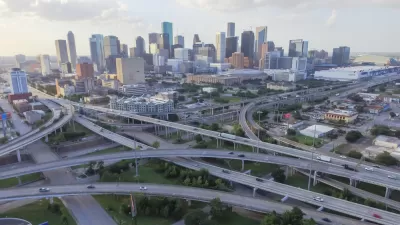Compared with European averages, U.S. and Canadian residents spend 30-50 percent more money and time on transport due to dispersed, automobile-dependent development.

According to data published by economists Stephen Redding and Matthew Turner, the average American household spent approximately 18 percent of its budget on transportation compared with just an average of 12.8 percent among its peer. That means a typical U.S. household spent about five percentage points more of its income, about $1,500 annually, on transportation than the residents of other developed countries.
Table courtesy of City Observatory.
Similarly, the average American worker spent about 51 daily minutes commuting, compared with 39 average daily commute minutes for all other countries. This means that over the course of a year with 250 working days, the typical American commuter spends about 51 more hours commuting than workers in other high income countries. Valued at $15 per hour, the additional cost of commuting to US workers comes to $770 per worker worker per year.
While there may be other reasons for these disparities, they probably reflect American cities' more sprawled, automobile-dependent development patterns.
FULL STORY: Sprawl Tax: How the US stacks up internationally

Planetizen Federal Action Tracker
A weekly monitor of how Trump’s orders and actions are impacting planners and planning in America.

San Francisco's School District Spent $105M To Build Affordable Housing for Teachers — And That's Just the Beginning
SFUSD joins a growing list of school districts using their land holdings to address housing affordability challenges faced by their own employees.

The Tiny, Adorable $7,000 Car Turning Japan Onto EVs
The single seat Mibot charges from a regular plug as quickly as an iPad, and is about half the price of an average EV.

Vehicle-related Deaths Drop 29% in Richmond, VA
The seventh year of the city's Vision Zero strategy also cut the number of people killed in alcohol-related crashes by half.

Seattle's Plan for Adopting Driverless Cars
Equity, safety, accessibility and affordability are front of mind as the city prepares for robotaxis and other autonomous vehicles.

As Trump Phases Out FEMA, Is It Time to Flee the Floodplains?
With less federal funding available for disaster relief efforts, the need to relocate at-risk communities is more urgent than ever.
Urban Design for Planners 1: Software Tools
This six-course series explores essential urban design concepts using open source software and equips planners with the tools they need to participate fully in the urban design process.
Planning for Universal Design
Learn the tools for implementing Universal Design in planning regulations.
Smith Gee Studio
City of Charlotte
City of Camden Redevelopment Agency
City of Astoria
Transportation Research & Education Center (TREC) at Portland State University
US High Speed Rail Association
City of Camden Redevelopment Agency
Municipality of Princeton (NJ)





























